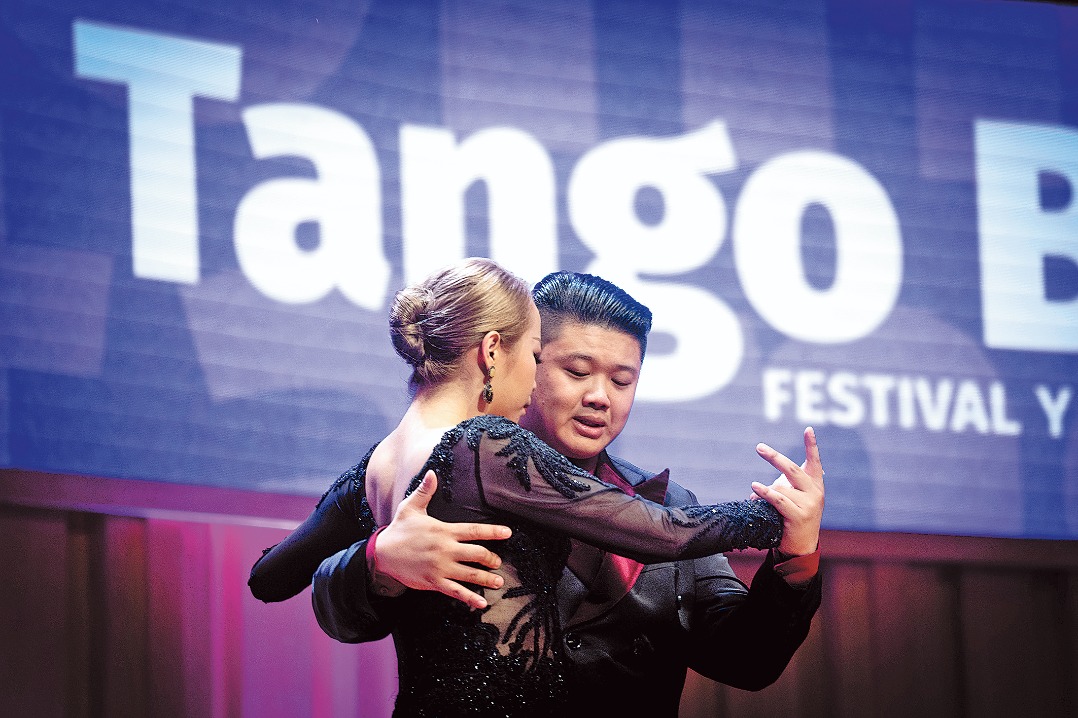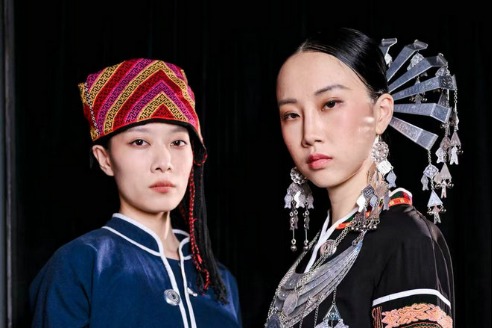Master craftsman speaks visual language

Walking into Yuan Changjun's studio in northwest Beijing's Changping district, a large silver statue of a celestial maiden playing a reversed pipa, a four-stringed Chinese lute, in a flying motion catches visitors' attention.
"The statue was inspired by the iconic Dunhuang murals in Gansu province. It's not a direct replication, but a reinterpretation," says the man in his 50s who has practiced filigree inlay for over three decades.
"The face is modern — contours, expression, and hairstyle, which speaks today's visual language," he adds.
Using silver as the base material for the figure, Yuan began the creative process with one of "three core techniques" — zhitai (forming the base).
"This involves shaping the figure's basic form through forging and engraving, establishing the character's pose and expression," he explains.
To convey the flowing, graceful movement of its skirt, Yuan employed huasi (filigree) — the delicate weaving of gold or silver threads.
"Every line and texture of the skirt is engraved to evoke the lightness and translucency of silk," he notes.
One of the celebrated eight imperial crafts, including jade carving and cloisonne of ancient China, filigree inlay dates back over 2,000 years to the Han Dynasty (206 BC-AD 220). This intricate craft peaked during the Ming (1368-1644) and Qing (1644-1911) dynasties, often used to create opulent jewelry, ceremonial ornaments and royal artifacts.
The artistic technique involves twisting threads of pure gold or silver as fine as hair into intricate motifs — floral scrolls, auspicious symbols or animal forms — then soldering them onto a base and embellishing them with precious stones, pearls, enamel, or kingfisher feathers.
The process demands extreme precision, patience, and craftsmanship, with some pieces taking months or even years to complete.
Yuan notes that many people misunderstand filigree inlay as simply a decorative patterning. In reality, it encompasses several major technical components and represents one of the most complex forms of traditional craftsmanship.
"Many of our historical gold and silver artifacts, and certain bronze objects, fall under the umbrella of filigree inlay," Yuan explains.
Beyond zhitai and huasi, zanke (fine engraving done with a chisel) is the third core technique.




































